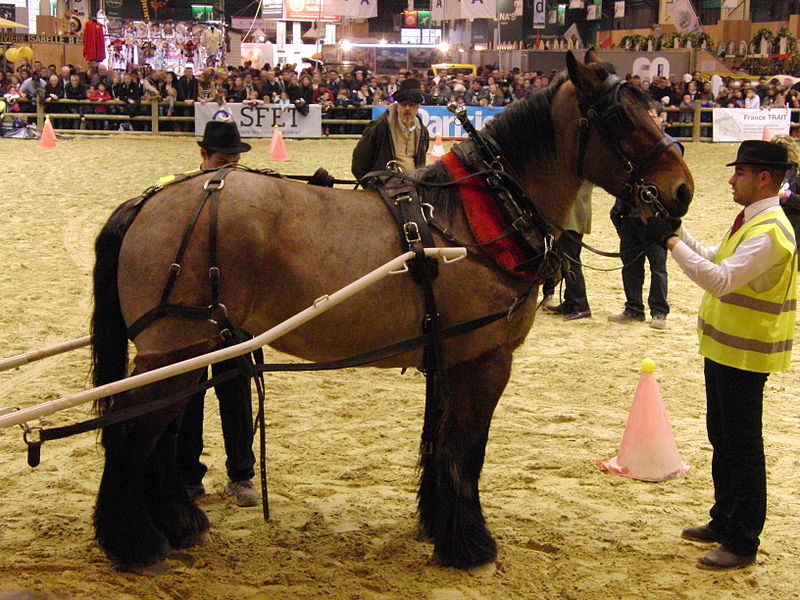The Auxois horse
This draught horse, originally from Auxois in Burgundy, is said to derive from the ancient Burgundian horse. Local mares are crossed with Ardennes and especially Nord Draft horse stallions. Infusions of Boulonnais, Percherons and Nivernais blood took place in the 19th century. The Syndicate du Cheval de Trait de l’Auxois (Auxois Draught Horse Syndicate) was founded in 1913, and opened a Livre Genealogical the same year, which was closed in 1948. Only large-format Ardennais or Trait du Nord stallions used since the early 20th century can be listed as “Auxois factors” in the Livre Genealogical. The number of Auxois stallions is small.

Caractère et aptitudes du cheval
This calm, gentle, even-tempered horse is very powerful, enduring, and courageous. Its gaits are wide and flowing.
Utilisations du cheval
Appreciated for pulling, cultivation and skidding in the forest, this horse is also used for green tourism, carriage driving competitions and processions. Since 1993, its milk has been marketed for therapeutic purposes.
Like many other breeds of draught horse, its use was indispensable for agricultural work, but also during the Second World War, particularly in the face of the fuel shortages imposed by the conflict. The gradual spread of motorization after the war meant that this breed was used for butchery, as the horse was abandoned in the face of the arrival of more modern equipment.
Morphologie du cheval
Short head, broad forehead. Straight profile. Small ears. Massive, brevilinear body. Short, powerful neck. Well defined withers. Sloping shoulder. Broad fore chest. Deep chest. Rounded ribs. Back, loins straight, broad, and short. Long hindquarters. Very muscular croup. Strong limbs. Well-muscled arms and forearms; wide knees. Short cannons. Strong tendons. Clean joints. Scanty hair on limbs. Tail set low. Coat: bay, roan, chestnut and auber. Today, gray, which is exceptional, is tolerated. Height: 1.60 to 1.68 m.


